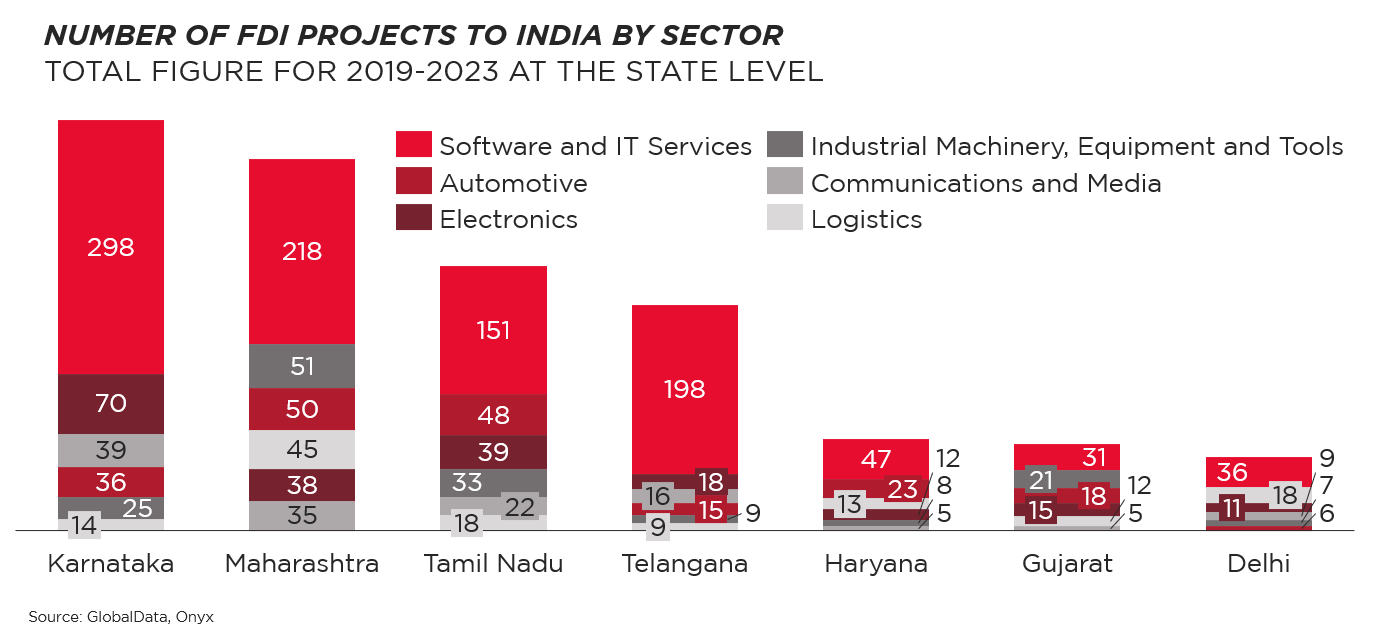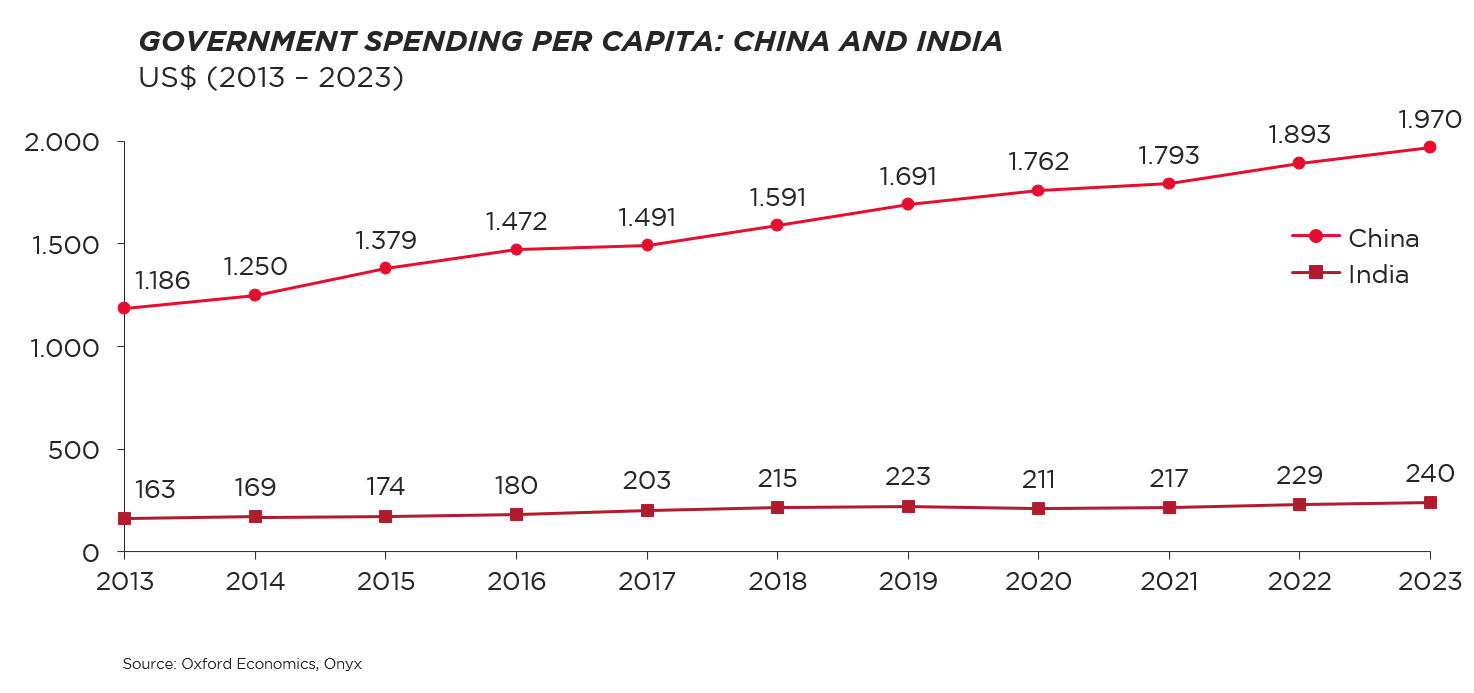
Search our articles
India's Elections and Investment Dynamics
Key Insights:
- What is happening: As India gears up for its 2024 parliamentary elections, a pre-poll survey forecasts a third consecutive victory for Prime Minister Narendra Modi's National Democratic Alliance (NDA). The NDA is expected to secure ~75% of lower house seats, while the opposition Indian National Developmental Inclusive Alliance (INDIA) is projected to claim ~15%.
- Why it matters: India aims to become the leading manufacturer in Asia as companies diversify their supply chains away from China. Strengthening supply chain efficiency and fostering the growth of the manufacturing sector are seen as crucial for achieving this goal, with both alliances prioritizing these areas.
- What happens next: An NDA victory means businesses can anticipate policy continuity. Manufacturing will remain a key focus, propelled by coordinated policy initiatives and the global trend of supply-chain diversification. However, despite the BJP's pledges to create jobs and enhance infrastructure and manufacturing, it has consistently fallen short of these goals, hindering the pace of companies relocating to India.
ANALYSIS
2500 political parties vying for lower house seats
Opinion polls indicate Prime Minister Narendra Modi's Bharatiya Janata Party (BJP) and the NDA are likely to win but face opposition from the INDIA coalition led by the Congress party. Despite their differing ideologies, both BJP and Congress prioritize economic and infrastructure development and industrialization, indicating business continuity regardless of the outcome.
Investment dynamics in India
India's 590 million-strong working age-population and broad coastal geography are among the reasons it is a key destination for multinationals. Investments are primarily focused in Karnataka, Maharashtra, Tamil Nadu, and Telangana, spanning six key sectors: software and IT services, electronics, automotive, logistics, industrial machinery, and communications and media. The software and electronics sectors, in particular, have seen the largest increase in inbound investments.

Modi's government has pursued policies across the most significant policy spectrum for businesses, including improvements in labor, industrial, trade, infrastructure, and sustainability policy. However, India still faces significant structural hurdles in each of these areas to becoming the preferred destination for investment. These are difficult challenges that may take time to be addressed given the complexity of India’s policy and political landscape.
What’s next?
With Modi likely to remain in power, businesses can anticipate policy continuity, including a continued push for infrastructure development. The government aims to sustain the momentum of recent years, with ambitious targets such as constructing over 5,000 kilometers of railway tracks annually and developing 15,000 kilometers of access-controlled highways geared towards multinational logistics. Additionally, there is an effort to enhance India's stature as a hub for aviation.
The BJP aims to boost manufacturing by focusing on three key areas:
- Creating new value chains in the automotive, electronics, and railway equipment sectors;
- Enhancing the existing textiles and active pharmaceutical ingredient (API) industries to promote widespread employment; and
- Localizing defense production.
Since taking power in 2014, the BJP has pledged to create jobs and enhance infrastructure and manufacturing, but it has consistently fallen short of these broad policy goals. India's per capita government spending, particularly in infrastructure crucial for developing the manufacturing sector, remains lower than that of China. This disparity has unfortunately hindered the pace of companies relocating to India.


Written by Onyx Strategic Insights


